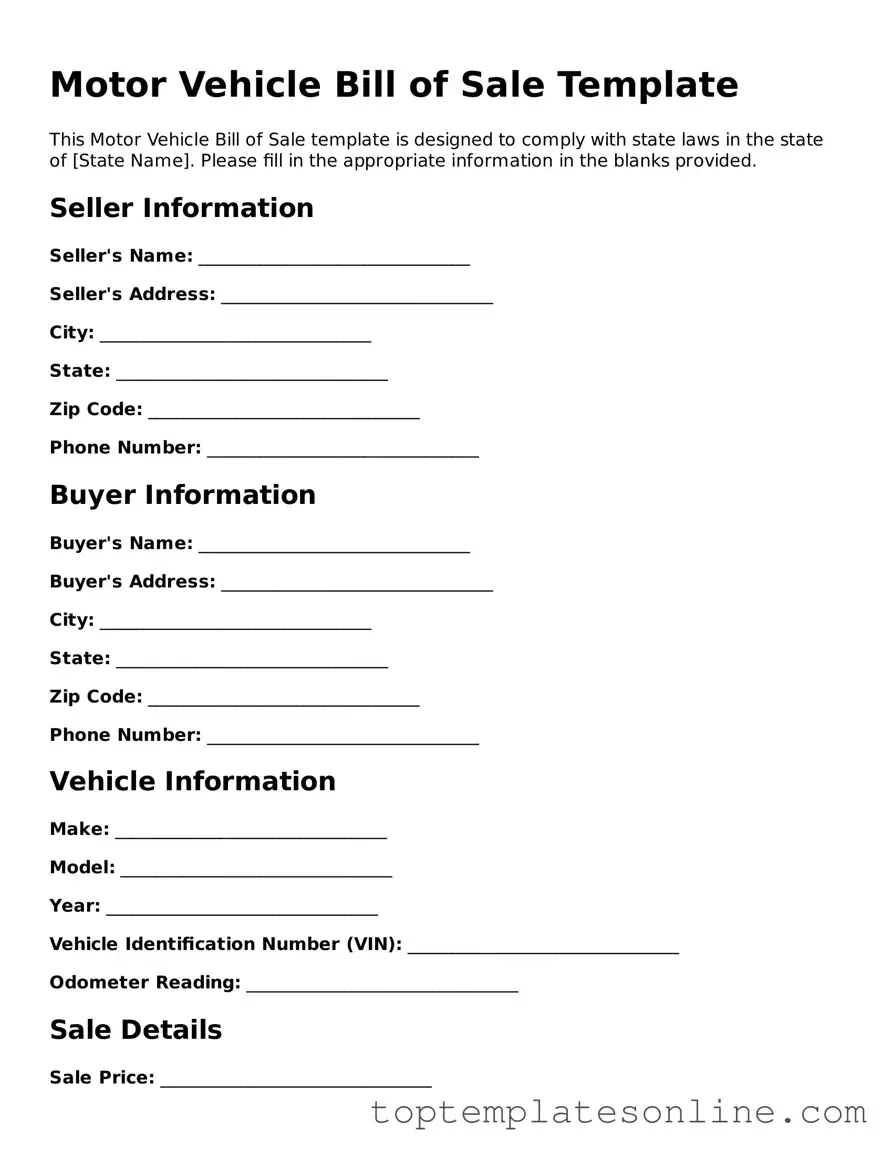Attorney-Approved Motor Vehicle Bill of Sale Form
The Motor Vehicle Bill of Sale form is a legal document that records the transfer of ownership of a vehicle from one party to another. This form serves as proof of the transaction, detailing important information about the vehicle and the parties involved. Understanding its significance can help ensure a smooth and transparent transfer process.
Customize Motor Vehicle Bill of Sale Here
